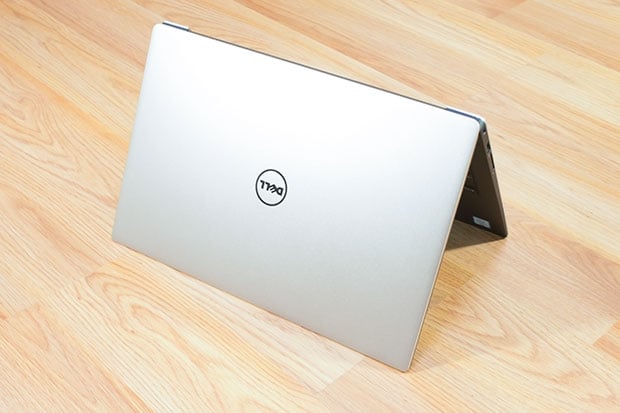Dell XPS 13 Review Late 2015: Refreshed With Skylake
Dell XPS 13 Introduction
Dell recently refreshed its popular XPS 13 with new hardware to bring it up to date with current CPU and storage offerings. The updated model now sports a Skylake-based Intel processor and a Samsung PM951 NVMe solid state drive, plus a few minor tweaks to its already impressive design. When the current iteration of the Dell XPS 13 debuted back in January of last year, it was nearly unrivaled in terms of its power to size ratio, and overall value in the space. The ultrabook market has heated-up a lot since then though, and the XPS 13 has some stiff competition at the moment.
In addition to checking out Dell's tiny powerhouse, we should also mention Intel's SpeedShift technology, available in the 6th generation Skylake Core series processors, and the impact it has on system responsiveness, efficiency and overall performance. SpeedShift was introduced with Skylake, but Windows 10 did not initially support it with the launch build 10240 and some OEMs did not have the correct BIOS microcode implemented either. SpeedShift has now been unlocked with the Windows 10 November update build 10586, virtually all OEMs have implements the latest microcode in their BIOSes, and the CPU is now free to manage its own frequency and power states in hardware instead of relying on the operating system to make the call. Though this is a subtle shift in command, SpeedShift promises to reduce processor ramp-up times and thereby improve system responsiveness and efficiency.

Slide from Intel

Slide from Intel
SpeedShift is a benefit that is difficult to quantify but available to any new modern laptop with Windows 10 and an Intel Skylake processor. It doesn't have much, if any impact, on long sequential operations which keep the processor pinned with high utilization. However, any bursty or otherwise irregular, short workload will receive a mild boost as the processor snaps into action more quickly. There is also a secondary promise of improved power efficiency because the processor can ramp back down sooner once finishing a task as well. This decrease in power usage is not enough, however, to be definitively measured in long endurance tests.
|
| Processor Options |
6th Gen Intel Core i5-6200U (3M Cache, up to 2.8 GHz) |
| Display |
13.3" QHD+ (3200 x 1800 276ppi IGZO IPS) InfinityEdge touch display |
| Graphics | Intel HD Graphics 520 |
| Memory |
8GB LPDDR3 1866MHz (On board) |
| Storage |
256GB PCIe NVMe Solid State Drive |
| Optical | N/A |
| Ethernet | N/A |
| Wireless Connectivity |
DW1820A 2x2 802.11ac 2.4/5GHz + Bluetooth4.1 |
| Interface (Left) |
Power/DC-in Jack; Thunderbolt 3 (USB 3.1 Gen 2 Type-C); USB 3.0; 4-pin Headset jack |
| Interface (Right) |
Noble Lock Slot; USB 3.0 w/ PowerShare; 3-in-1 Card reader (SD, SDHC, SDXC) |
| Interface (Back) | N/A |
| Webcam |
Widescreen HD (720p) webcam with dual array digital microphones |
| Operating System |
Windows 10 Home 64-Bit |
| Battery | 4-cell Lithium Ion (56 Wh) |
| Dimensions | Height: 0.33 inches (9mm) to 0.60 inches (15mm) Depth: 7.88 inches (200mm) Width: 11.98 inches (304mm) |
| Weight |
2.9 pounds (1.29kg) |
| Manufacturer Warranty |
1 year |
| Pricing | $1,399.99 as configured |
We received a mid-tier XPS 13 configuration from Dell which ought to be suitable for most buyers. It packs a 15W dual core Intel Skylake Core i5-6200U processor clocked at up to 2.8GHz with integrated Intel HD 520 graphics, 8GB of LPDDR3 memory clocked at 1866MHz, and of course the aforementioned Samsung PM951 256GB NVMe PCI Express solid state drive. All of that is packed into a 12 inch wide frame with a 13 inch (diagonal) 3200x1800 InfinityEdge UltraSharp Touch display and sells for $1,399.99.
Now, let's take a look around and see what this premium machine can do...








